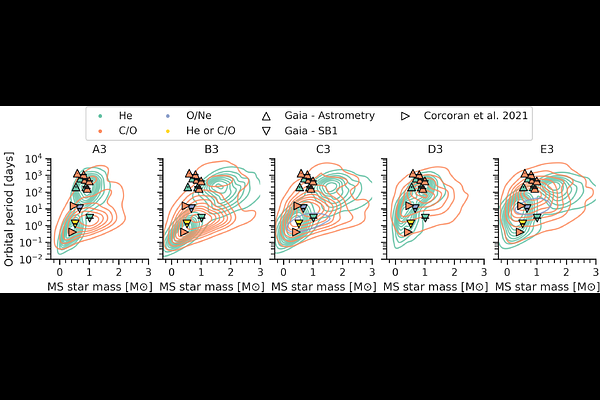Calibration of Binary Population Synthesis Models Using White Dwarf Binaries from APOGEE, GALEX and Gaia

Calibration of Binary Population Synthesis Models Using White Dwarf Binaries from APOGEE, GALEX and Gaia
A. C. Rubio, K. Breivik, C. Badenes, K. El-Badry, B. Anguiano, E. Linck, S. Majewski, K. Stassun
AbstractThe effectiveness and stability of mass transfer in binaries system are crucial in determining its final product. Rapid binary population synthesis (BPS) codes simplify the complex physics of mass transfer by adopting parameterized prescriptions for the stability of mass transfer, accretion efficiency in stable mass transfer, and the efficiency of common-envelope ejection. We calibrate these uncertain parameters by comparing BPS models with observational data. White dwarf and main sequence binaries are an ideal population to study binary interaction, as they can be formed through stable or unstable mass transfer, or without interaction, which affect the orbital period and masses of the present-day population. The APOGEE-GALEX-Gaia catalog provides a homogeneous sample of over 500 systems with well measured radial velocities that can be used as a comparison baseline for BPS simulations of such binaries. We compare the distribution of observed maximum radial velocity variation ($\Delta RV_{\rm max}$) and estimated masses to BPS models simulated with COSMIC, varying the mass transfer and common-envelope ejection efficiency, and the criteria for mass transfer stability at key evolutionary stages. The $\Delta RV_{\rm max}$ comparison shows clear preference for a higher fraction of stable mass transfer during the first ascent giant branch, and for highly effective envelope ejection. For the systems with WD masses, there is a slight preference for non-conservative mass transfer. In COSMIC and similar codes, the envelope ejection efficiency and the envelope binding energy are degenerate parameters. Our result of high ejection efficiency may indicate that either additional sources of energy are required to eject the envelope, or that its binding energy is lower than traditionally assumed. Future comparisons to BPS simulations can be drawn for other datasets as they become available.